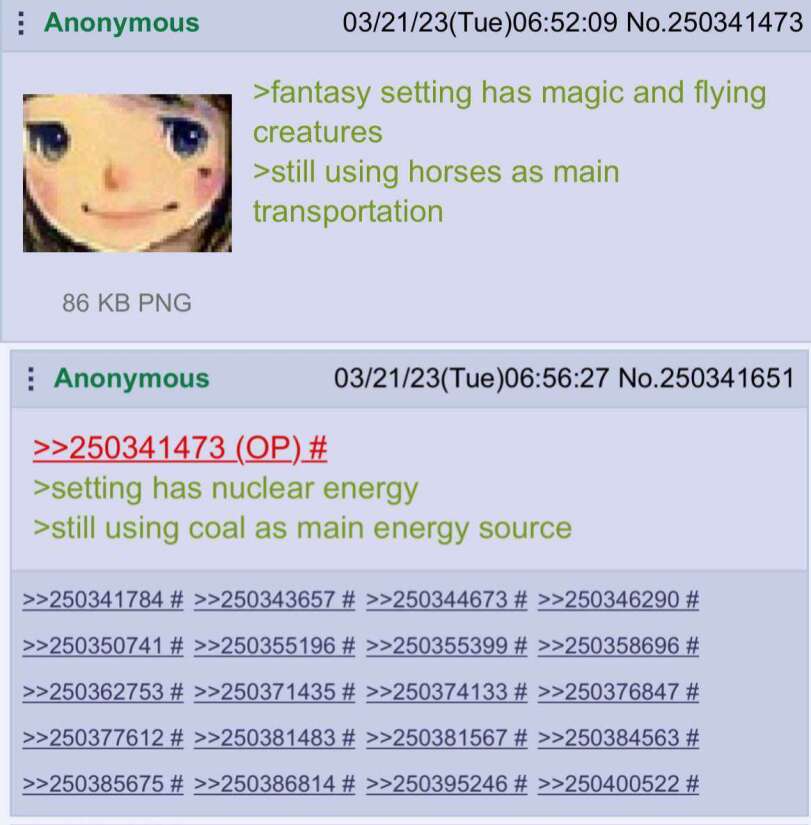this post was submitted on 29 Mar 2024
1200 points (97.7% liked)
Greentext
4464 readers
1260 users here now
This is a place to share greentexts and witness the confounding life of Anon. If you're new to the Greentext community, think of it as a sort of zoo with Anon as the main attraction.
Be warned:
- Anon is often crazy.
- Anon is often depressed.
- Anon frequently shares thoughts that are immature, offensive, or incomprehensible.
If you find yourself getting angry (or god forbid, agreeing) with something Anon has said, you might be doing it wrong.
founded 1 year ago
MODERATORS
you are viewing a single comment's thread
view the rest of the comments
view the rest of the comments

Yeah, just getting nuclear waste disposal and whatnot started up would be very expensive, despite having a ton of space to put said waste, since there are likely all kinds of regulations around moving such waste between states and territories.
That said, Australia surely needs some electric backbone for overnight use, and the goto solution for renewables is batteries, which are quite expensive at scale. So I'd like to see the numbers here.
So, what you're talking about here is essentially the concept of "baseload power", which is a very common talking point in anti-renewables conversation, including by well-meaning people who have simply come to accept it because of how often it gets mentioned in the media and in online conversations.
But it turns out that we have known for over a decade that a mix of different renewable technologies do not need any base-load power stations to operate reliably.
From your article:
So basically the concentrated solar w/ thermal storage acts as a battery. I'm interested to know what the costs look like (is that the salt reactor thing I've heard about). And if you have lots of hydro available, then yeah, you can probably get away with it, and may even be able to pump water so the hydro station can act as a battery. However, hydro isn't practical in many areas, and moving electricity long distances may be too lossy.
I'm interested in the development of nuclear microreactors, which can be transported where they're needed. I think they could potentially replace hydro in areas where it's not available. So as areas transition to more renewables, these could operate as a backup in case simulations don't match reality.
I'd love to go 100% renewable, I just don't think that's feasible at the moment. But I could absolutely be wrong, I may need to read up on the latest energy storage options.
Rubbish dump methane to electricity is cheap and effective. The Canberra mugga lane tip has had a pilot plant~~, not sure if it's still running~~ generating 37 GWh a year
Hydro on the mainland is pretty much just Snowy Hydro. There was a project from a former government to make that pumped hydro. I don't think it has yet been finished. I don't know whether the project has been cancelled
37 GWh, now that's a "random" number
Solar thermal - yes, the leading technology is a field of heliostat mirrors focusing sunlight on a tower, melting and heating salt. That system can easily hold onto the heat in their salt for use at night
CSIRO in 2014 thought it was possible. I trust they did the maths right.